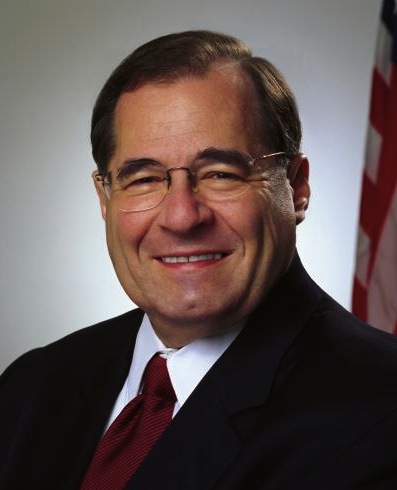A Congressional road show on freight came to New York late last week, with Port Authority Executive Director Pat Foye joining air, trucking, and rail industry representatives Friday afternoon to testify before the House Transportation and Infrastructure Committee's freight panel. The hearing covered a range of issues, including a status report on the long-discussed Cross-Harbor Freight Tunnel.

The Cross-Harbor project, a longtime cause of New York Representative Jerrold Nadler -- who led the hearing along with Representative John Duncan, a Republican from eastern Tennessee -- would create a new rail tunnel between New Jersey and Brooklyn to carry freight to Long Island and potentially north through Westchester County. The tunnel would cut down on the New York region's heavy reliance on trucking, but also increase freight demand on some corridors that see significant passenger service. A 2004 estimate from the New York City Economic Development Corporation projected it would cost between $4.8 billion and $7.4 billion, depending on whether the tunnel consists of one tube or two.
Foye said the draft environmental impact statement for the project is currently being reviewed by the Port Authority and the Federal Highway Administration, and should be released in the late fall or winter. Foye did offer a tiny glimpse of the report's findings, saying that the tunnel is projected to carry up to 55,000 containers each year within 20 years. By comparison, the existing freight barge covering the tunnel's route carried 1,600 rail cars last year. Before he left the Port Authority, Foye's predecessor, Chris Ward, said the project would address the urgent need to reduce truck traffic on city streets.
The hearing's testiest exchange came between Foye and Representative Michael Grimm, a Republican representing Staten Island and parts of Brooklyn, and it wasn't about the freight tunnel. Grimm repeatedly asked whether toll revenue funded Port Authority debt payments on the World Trade Center and other non-transportation projects, before Nadler stepped in. "You're talking past each other," he said. "I think what Mr. Foye is saying is that revenue from these tolls do go to service debt, but only for the transportation facilities, and not other things, like the World Trade Center."
"Yes, sir," Foye replied.
The cost of trucking was also a big issue for Republicans at the hearing, with Rep. Markwayne Mullin (R-OK) expressing disbelief at the cost of truck tolls in the New York area. Gerry Coyle of American Trucking Associations applauded Grimm's effort to force the MTA to drop tolls on the Verranazo-Narrows Bridge through legislation.
Coyle also spoke against congestion pricing, saying that it "will not necessarily work or be effective for commercial traffic." Although some ports have plans to encourage off-peak truck trips, Coyle said, hours-of-service regulations from the Federal Motor Carrier Safety Administration often put trucks on the road during rush hours. "It's really counter-productive," he told the panel, apparently disregarding all the time commercial drivers would save if fewer rush-hour car commuters were on the road.
Foye said that the Port Authority is working with transportation departments in New Jersey, New York state, and New York City on a comprehensive regional freight plan. He also said that infrastructure replacement projects should receive speedier environmental review, citing the Bayonne Bridge and the Tappan Zee Bridge -- which will build a new, wider span without additional transit investment -- as examples of the Obama administration expediting the environmental review process. "The case is clearer with a project like the Bayonne," Foye said. "We're not building a bridge or knocking a bridge down."
As Streetsblog reported earlier today, an amendment to the Senate appropriations bill from Louisiana Republican David Vitter would entirely exempt projects like the Tappan Zee Bridge widening from the environmental review process.
While the House is holding freight hearings, US DOT is working toward its own national freight plan with its Freight Advisory Committee, and top officials there have expressed a desire to prioritize some modes over others. "We want to keep goods movement on water as long as possible, and then on rail as long as possible and truck it for the last miles," Deputy Secretary John Porcari said in 2010.
On Friday, Streetsblog asked Duncan if he agreed with Porcari's modal hierarchy. "Yes," he said. "It's the goal of I think almost everyone in transportation to emphasize rail and water transportation a little bit more than it's been emphasized in the past, and I think we can do that," he said. "Everyone on this panel is very focused on trying to balance out our transportation a little bit more than it is at this time."
"We're getting close to the time that we're going to put out our report and our recommendations," Duncan said, adding that recommendations could be enacted in future transportation bills or separate pieces of legislation. Duncan noted that the freight panel is modeled on a House Armed Services Committee panel on reforming acquisition in the Department of Defense. "Several of their recommendations were actually passed into law," he said.





